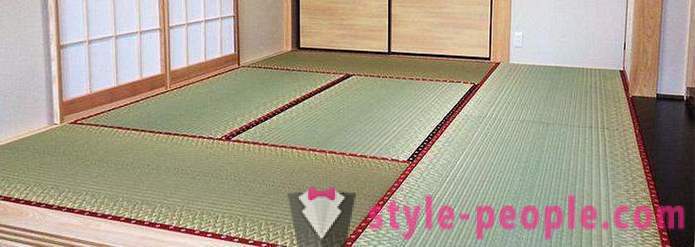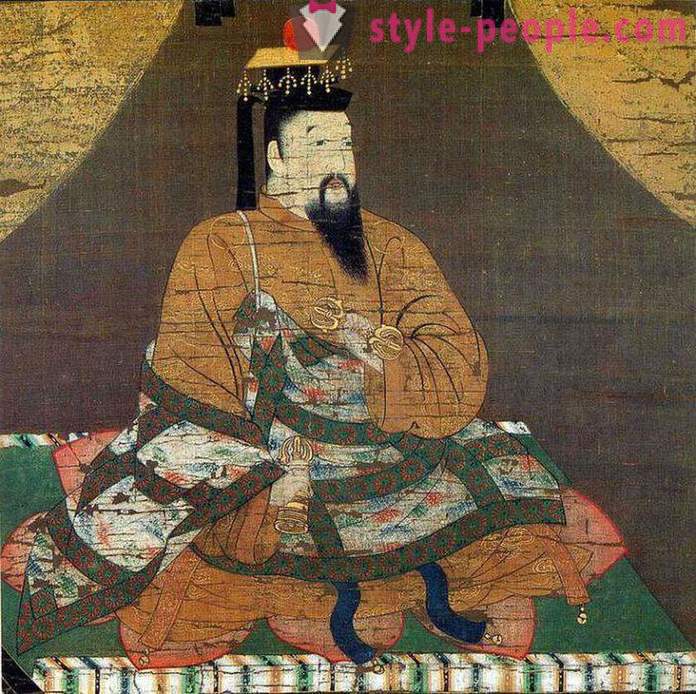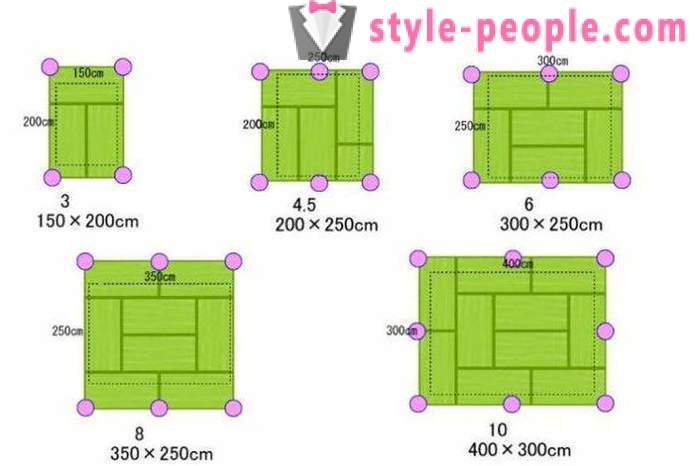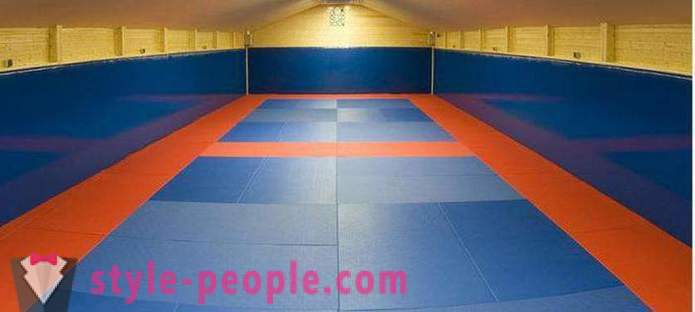Tatami - a centuries-old tradition of the East
The history of the mat is closely intertwined with the plant rush - the main raw material for flooring. Its porous structure regulates the microclimate in a residential area, which is essential given the high humidity on the island. It has anti-allergic and disinfectant properties. Tatami - a traditional floor covering in Japan.
Tatami: educational program
It is kind of cane, in its structure resembles a sponge. This feature was essential for the challenging Japanese climate. The plant acts as a natural air conditioner: absorbs moisture and gives if necessary.

Tatami - mat is composed of three parts:
- The front part - dense, smooth and pleasant to the touch. Her woven from Sitnik.
- The inner part. She is multi-layered, and densely woven from rice straw.
- The lower part.
All the components are flexible, so the mat - a good shock absorber. The product holds its shape and assumes the impact when the fall. It has good thermal insulation properties, creating a sense of comfort in cold and hot periods.
Due to peculiarities of weaving and its hygroscopic coating poorly lit. Hot ember on the mat surface of the lights, and will for a long time to decay.
History
Previously, the straw used to pack the Japanese mat. Now increasingly using foam sheathing it with a cloth. About a thousand years ago, dwellings were luxurious decoration mat. Their significance was high because they sat people of high rank: emperors, samurai, officials and respected person. Initially, these were called Goza mats. They were pleasant to the touch, because off with silk. Many centuries later, when they began to use ordinary people have become carpet mats all floor space.

Although it is the coating is not so popular in Japanese homes, but more often found in people, who honor traditions.
Tatami: the meaning of
In Japanese, it is "folding". That's what the "tatami".
Historians believe that the first mat was a small thickness, they can be folded or collapsed.
Eastern countries are interesting for their anxious attitude to tradition. Some do not go out of use more than one century, and live in families for millennia. On the mat is also covered.
Japan residents claim that if properly position the mats on the floor, it may attract trouble at home. For example, mats are not placed in a proper shape on the floor grating to converge together three or four tatami angle. The value in this is a completely practical because asymmetrically stacked mattresses do not move and do not get off, even if it is actively moving. These mats are no fixed on the floor, they are hosting, sleep, have made the podium.
The use of
The dimensions of the floor covering is strictly regulated. Rooms in Japanese homes is constructed in such a way as to fit the design of a required number of mats from three to twelve pieces.

In Japan, a very expensive housing, it is noteworthy that the ads for the surrender of apartments contain information about the number of mats. Thus the Japanese give to know about the area of the apartment.
What does the mat in this sense?
Standard dimensions -. 0, 9, 1, 8 m thickness of this mat can be up to six centimeters. With such dimensions, its mass can reach 30 kg. All because of the ability of the reed, which is filled with the mat to absorb moisture.
It is noteworthy that in a mate do not start pests.
The traditional use of the mat - is:
- maximizing room space;
- outlandish decor for a man of Western culture;
- ecological habitat;
- comfort.
Such floor coverings are durable, but experts do not recommend wet cleaning mats as filler can become moldy. It is better to use a vacuum cleaner, and every six months to dry in the fresh air on a sunny day and turn the other side. Also in the eastern culture is not made to be on the mat in the shoe or with dirty feet.
Sports
The Western and tatami our culture - is primarily a shell, which is used schools teaching martial arts.
As a sports mats tatami quite hard, so use them carefully.
Not long ago, the organization of UWW, combining different types of martial arts, said that the traditional tatami will change its color. In place of the red and yellow mats come blue and orange.

The decision was made to improve the visual images broadcast championships in martial arts. Organizers also hope to attract new viewers. Earlier it was reported that the shape of the wrestlers will be focused on the youth segment.
In many martial arts have their own etiquette, is inextricably linked with the history of thousands of years of existence of the tatami transferred to the sport of everyday life. This is dictated not only by practical motives, but also a tribute to the traditions of a great culture.













































